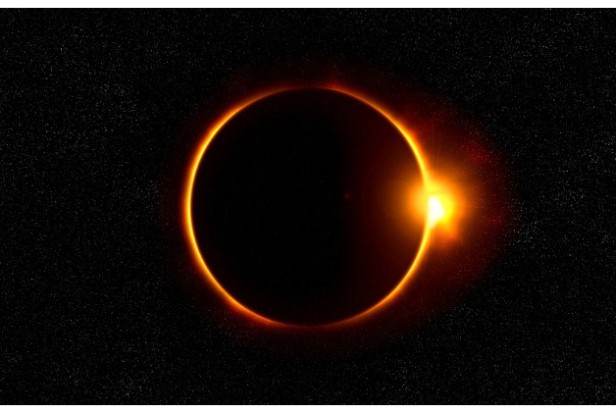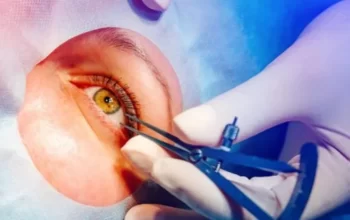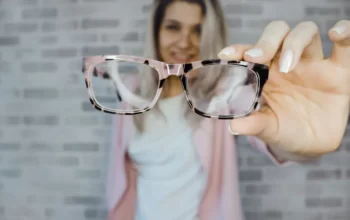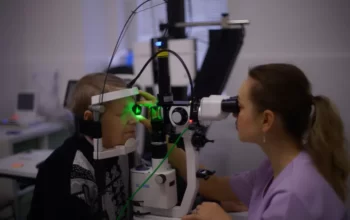
Learn how to use a welding mask while viewing solar flares in this guide, as well as the critical importance of eye protection from solar flares.
“Can I look at the sun while wearing welding glasses?” is yes, but only when they have shade level 14 lenses.
Can You Look at a Solar Eclipse Or the Sun With a Welding Helmet?
You can, but it is not ideal, is the answer. In conclusion, if you wear level 14 welding eye protection, you can enjoy a solar eclipse. This is based on a NASA study that suggests appropriate eye protection made specifically for viewing a solar eclipse and lists possible alternatives.
The full study is available here, but in short, a high 14 shade welding lens will provide adequate eye protection for solar viewing.
The highest rating for welding glasses, Level 14, is typically used in specialized welding environments with demanding conditions and specifications. This indicates that the majority of hardware stores do not stock this kind of lens.
Level 12 or 13 is the highest level typically found in off-the-shelf products. These shade levels might be effective for a brief time, but they are not advised.
Fortunately, level 14 replacement glasses are reasonably priced online, so you can adapt your favorite pair of welding masks for the upcoming solar eclipse!

Why Ordinary Sunglasses Won’t Work
Most people are aware that sunlight contains ultraviolet (UV), which can damage the eyes. Because of this, good sunglasses should shield users from UVA and UVB rays. UV-blocking sunglasses are designed for use in indirect sunlight, though. That is, blue sky light that has been scattered as well as sunlight that has been reflected off of commonplace objects like trees, rocks, and common surfaces. However, sunglasses aren’t designed for looking directly at the sun. The confusion that results from viewing an eclipse has seriously damaged some people’s vision, which is why some people choose to wear sunglasses. Why do sunglasses not work? Due to the extreme levels of UV, visible light, and infrared radiation that are emitted when looking directly at the sun.
According to Kaiser Permanente, standard sunglasses only provide a reduction factor of ten, whereas solar eclipse glasses reduce light intensity by a factor of 10,000. The cornea, which is transparent and protective, and the lens of the eye are both harmed by strong ultraviolet light. The retina will be harmed by intense visible light and infrared. The heat you experience when standing in direct sunlight on a summer day as opposed to when you are in the shade is known as infrared heat. This already powerful light is concentrated onto a small region of the retina by the eye’s lens, which works as a magnifying glass. Paper or a dry leaf will burn if sunlight is focused with a regular magnifying glass. The lens of the eye has four times the power of a standard magnifying glass, according to Scientific American. The retina will be damaged both thermally and chemically by focused light.
Sunglasses don’t block enough visible light or infrared to protect the retina from sun exposure. Sunglasses could block enough visible light to view an eclipse, but they would be too dark to see anything besides the sun and brilliant welding arc flashes to be useful for driving or walking.
How Do Welding Helmet Shades Work?
There are two main types of welding helmets you can buy:
- lenses with photoreceptors that automatically darken (almost) as soon as they detect bright lights.
- fixed-shade lenses that are always dark, much like a pair of sunglasses.
Infrared and ultraviolet rays, which can harm your eyes if you are not protected from them, are blocked by multiple filters in welding lenses.
Only visible light can pass through welding lenses, protecting the welder’s eyes while allowing them to see the welding flame and the workpiece.
Because of how bright this light is even now, welding goggles have a much darker shade than regular sunglasses or other visors.
When grinding or performing other non-welding tasks that benefit from eye and face protection, auto-darkening glass frequently has adjustable shade level settings.
Safety Tips for Viewing An Eclipse
- The importance of protecting your eyes cannot be overstated. Use either welding glasses with a shade level of 14 or solar eclipse glasses that adhere to ISO 12312-2:2015 requirements. Avoid the temptation to look at a partially eclipsed sun with unprotected eyes. The sun still has enough exposure to cause damage even though it may seem dim. In fact, a case study of a woman who observed a partial eclipse without the appropriate safety measures exists. She noticed she had vision issues and went to the doctor. Doctors discovered a crescent-shaped burn on her retina. A crescent-shaped eclipse was burned into the image.
- Use protected optical devices when viewing the eclipse. When looking at the sun directly, protection is offered by welding and solar eclipse glasses (shade level 14). For use with unprotected optical tools like cameras, telescopes, or binoculars, they are not sturdy enough. The intensity of the sunlight is greatly amplified by these.
- Do your homework to determine whether you will be inside or outside the path of totality. Because the sun is never completely blocked by the moon, eye protection is required if you’re outside for the duration of the phenomenon. Know precisely how long the eclipse totality will last if you’re inside. When the moon completely blocks out the sun, you can remove your protection. When the sun starts to come out again, protect your eyes.
- Examine your eclipse glasses and adhere to the directions. Your solar eclipse glasses could harm your eyes if you use them improperly or in bad condition.
- Implement the right method. While putting on and taking off your sun protection, keep your eyes away from the sun. Avoid performing this while facing the sun.
What Type of Welding Helmets Can Be Used to Watch a Solar Eclipse Or Look at the Sun?
One of the best choices for welding is an auto-darkening helmet like the Lincoln Viking 3350 because it allows you to work with both hands free.
Auto-darkening helmets will also respond to ordinary sunlight. Even so, you might want to think about getting a fixed shade glass because during a solar eclipse, your lens might temporarily clear up as a result of the sensors’ temporary reaction to the sun’s disappearance.
In general, the sensors react quickly to a change in lighting conditions, though, as is needed for welding tasks. When there is a solar eclipse, always set your sensitivity to the highest level.
A handheld face shield or a flip-down visor are the trouble-free options you might want to use because permanent or fixed lenses don’t require batteries. Hand-held face shields are usually the cheaper option.
Other Uses for Solar Eclipse Glasses
From July 13, 2018, to August 2, 2027, ten solar eclipses will occur. Sadly, the next one won’t be in the United States until April 8, 2024. It will take a while unless you want to travel internationally. On November 11, 2019, large cities like New York, Detroit, Chicago, and Washington, D.C. will be able to see a nearly five-and-a-half-hour Mercury transit across the sun. A fascinating contrast to the typical way of seeing the planet is as a white spot against the dark night sky is to see it as a black dot against the brilliant surface of the sun.
The sizeable solar sunspots that sporadically appear on the sun can also be monitored. Solar flares emerge from the sun’s surface during periods of intense sunspot activity. These are the causes of the northern hemisphere’s aurora borealis and the southern hemisphere’s aurora australis.
Solar eclipse glasses are ideal for capturing spectacular sunbursts through clouds, trees, and structures if you don’t enjoy watching solar events. For photographers and artists, these serve as creative inspiration. Others use this stunning natural phenomenon as spiritual inspiration.
Final Words
It is possible to view a solar eclipse while wearing an old welding helmet. To prevent UV rays from harming your eyes, just use a high-level 14 shade.
Additionally, you never know; you might develop a new love for welding and be grateful that you already have some of the necessary safety gear.
To avoid any eye damage, it is advised that you wear solar eclipse glasses if you do not have the proper level of shade.
FAQs
Can You Look at the Sun With Welding Goggles
Alternatives are then sought after, such as welding glasses. Unfortunately, most welding glasses are unsuitable for looking at the sun.
What Glasses Can You Use to Look at the Sun?
Solar viewer (also known as solar viewing glasses or solar eclipse glasses) are special eyewear designed for direct viewing of the Sun. Ordinary sunglasses cannot block radiation that harms the eyes. To safely view solar events, such as eclipses, solar viewers are necessary.



